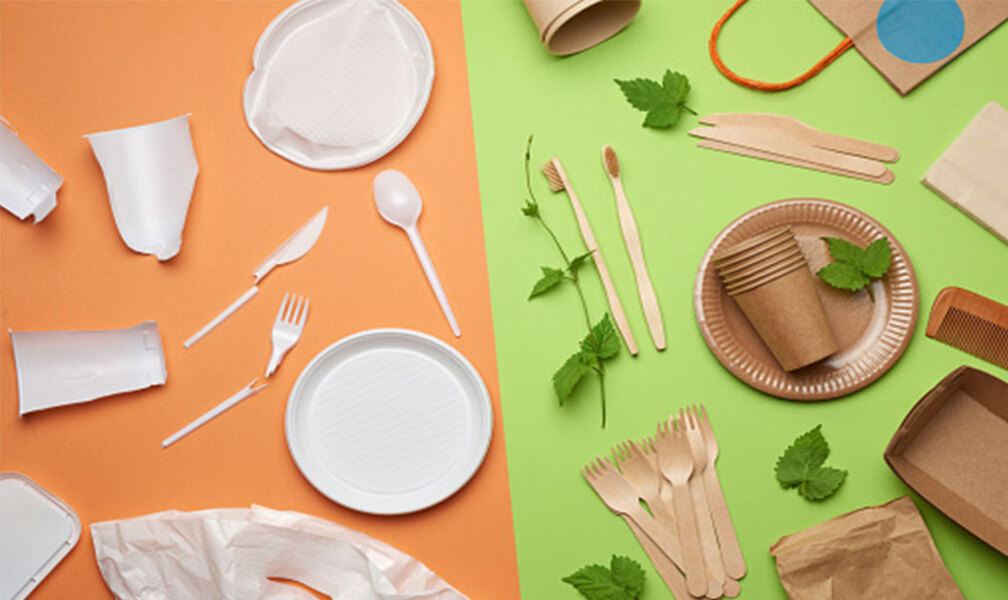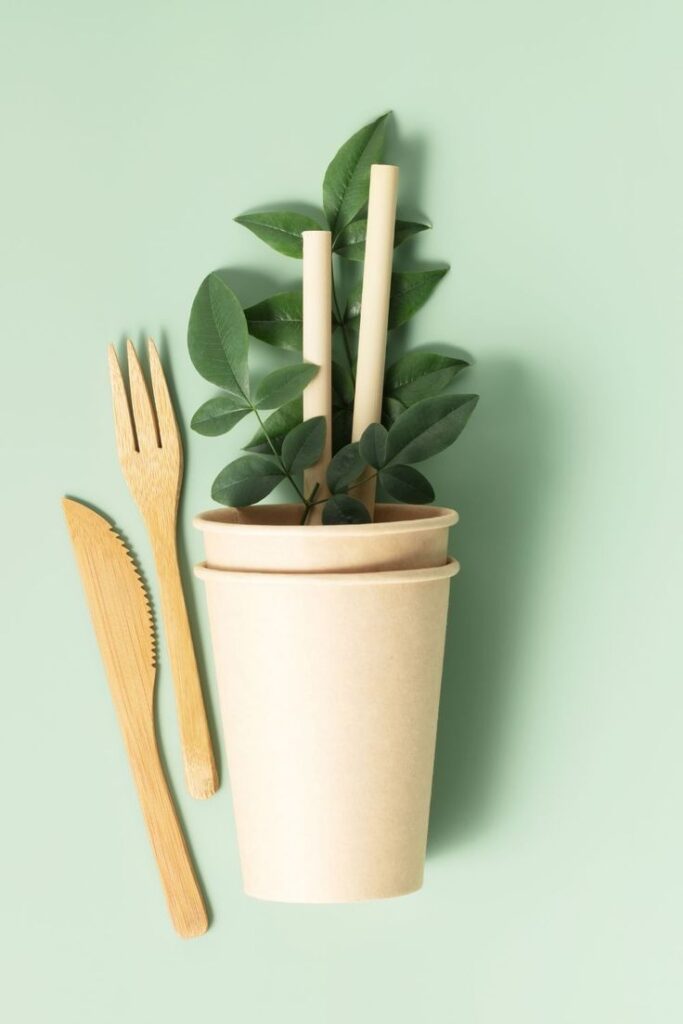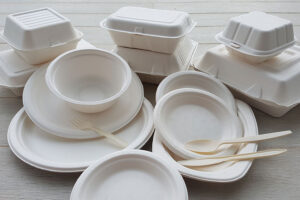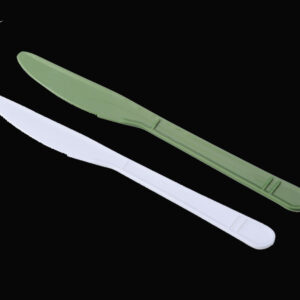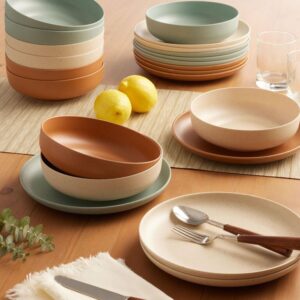Introduction
In recent years, the demand for eco-friendly alternatives to traditional plastic tableware has surged. With increasing awareness about environmental issues, consumers and businesses are turning towards sustainable options to reduce their ecological footprint. However, this shift has led to some confusion, particularly concerning the terms “compostable“ and “biodegradable“ regarding disposable tableware. Understanding these two categories’ differences is crucial for making informed and environmentally responsible choices.
What is Compostable Tableware?
Compostable tableware refers to products that can break down into natural elements in a compost environment, leaving no toxicity in the soil. To be considered compostable, tableware must meet standards such as EN 13432 (European standard) or ASTM D6400 (American standard). These standards ensure the product will disintegrate and biodegrade within a set time frame under composting conditions.
Industrial Composting Process
Certified compostable products typically require industrial composting facilities to break down efficiently. These facilities provide the controlled temperature, humidity, and microorganism conditions necessary for composting. Industrial composting usually involves maintaining temperatures of 55-60°C (131-140°F), which are essential for compostable materials’ rapid and complete decomposition.
Common Materials Used for Compostable Tableware
Compostable tableware is often made from renewable resources and plant-based materials. Some of the most common materials include:
- PLA (Polylactic Acid): Derived from fermented plant starch (usually corn), PLA is a popular material for compostable cups, plates, and cutlery.
- Bagasse: A byproduct of sugarcane processing, bagasse is used to make sturdy and compostable plates and bowls.
- Palm Leaf: Naturally fallen palm leaves are moulded into plates and bowls, providing a rustic and compostable option for tableware
What is Biodegradable Tableware?
Biodegradable tableware refers to products microorganisms can break down into natural substances like water, carbon dioxide, and biomass without leaving harmful residues. Unlike compostable products, biodegradable items do not always need specific environmental conditions to degrade, although the timeline and conditions can vary significantly.
Biodegradation in Different Environments
Biodegradable tableware can break down in various environments, including:
- Soil: Some biodegradable materials can decompose in the soil through microbial activity.
- Marine: Certain biodegradable products are designed to degrade marine environments, addressing concerns about ocean pollution.
- Home Compost: Compared to industrial composting, home composting typically lacks controlled conditions, meaning the degradation process is slower.
Examples of Biodegradable Materials
Various materials are used to create biodegradable tableware, each with different properties and degradation rates. Some examples include:
- PHAs (Polyhydroxyalkanoates): Bioplastics produced by microbial fermentation, known for their biodegradability in soil and marine environments.
- Starch: Starch-based materials, often blended with other bioplastics, degrade more readily than conventional plastics.
- Cellulose Derivatives: Made from plant cellulose, these materials are used to make biodegradable films and coatings for tableware.
Key Differences Between Compostable and Biodegradable
To better understand the distinctions, here’s a comparison table highlighting the key differences:
| Feature | Compostable Tableware | Biodegradable Tableware |
| Definition | Breaks down into natural elements in a compost environment without toxicity. | Breaks down by microorganisms into natural substances without harmful residues. |
| Standards | Must meet standards like EN 13432, ASTM D6400. | No specific standards required. |
| Decomposition Environment | Requires industrial composting facilities. | Can degrade in various environments (soil, marine, home compost). |
| Time Frame | Decomposes within a set timeframe under composting conditions. | Varies significantly depending on the environment. |
| Common Materials | PLA, bagasse, palm leaf. | PHAs, starch, cellulose derivatives. |
| Disposal | Must be sent to industrial composting facilities. | Follow product-specific disposal guidelines. |
Compostable as a Subset of Biodegradable
Compostable products are a subset of biodegradable products. All compostable items are biodegradable, but not all biodegradable items are compostable. Compostable products are designed to break down in industrial composting facilities, where the conditions accelerate the degradation process.
Suitability for Home Composting
Biodegradable products may only sometimes be suitable for home composting. Many biodegradable items require specific conditions that are difficult to achieve in a home compost bin, such as higher temperatures and specific microbial activity. Consequently, these products might take significantly longer to break down in a home composting environment.
Importance of Proper Disposal
Proper disposal of both compostable and biodegradable tableware is crucial. Compostable products should be sent to industrial composting facilities when available, while biodegradable items must be disposed of according to their specific requirements. Following product labels and disposal guidelines ensures these eco-friendly products deliver their intended environmental benefits.
Environmental Impact and Considerations
Reducing Plastic Waste and Pollution
Both compostable and biodegradable tableware can significantly reduce plastic waste and pollution. Traditional plastics can take hundreds of years to decompose, releasing toxic substances into the environment. In contrast, compostable and biodegradable alternatives break down much faster and cleaner, mitigating their environmental impact.
Contamination Concerns in Recycling Streams
One of the challenges with compostable and biodegradable tableware is the potential for contamination in recycling streams. Misplacing these products in recycling bins meant for traditional plastics can complicate recycling. Therefore, proper disposal infrastructure and consumer education are essential to maximize the environmental benefits of these materials.
Ongoing Research and Development
Continuous research and development aim to improve the performance and sustainability of compostable and biodegradable materials. Innovations in material science are leading to the creation of new bioplastics and natural fibre composites that offer better durability, usability, and environmental benefits.
Conclusion
Understanding the distinctions between compostable and biodegradable tableware is essential for making environmentally responsible choices. Compostable products require specific conditions provided by industrial composting facilities to break down effectively, while biodegradable items can decompose in various environments but may take longer. Proper disposal practices and informed decision-making based on local waste management capabilities are crucial to harnessing the full potential of these eco-friendly alternatives.


